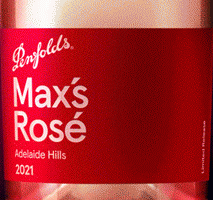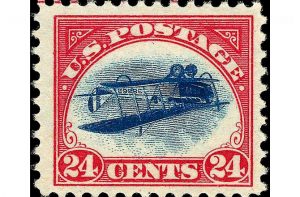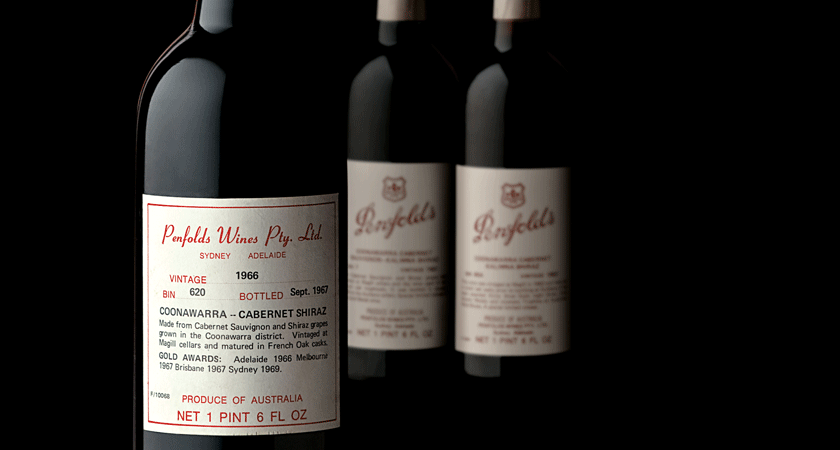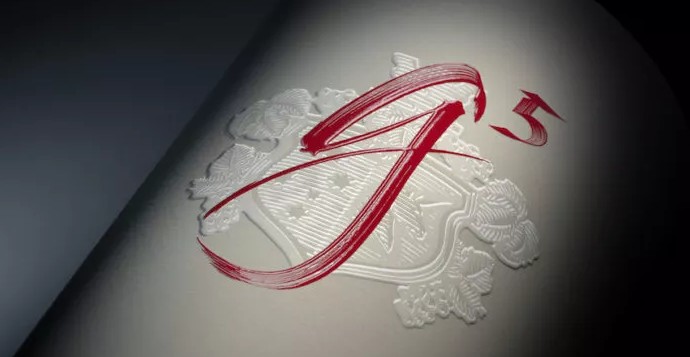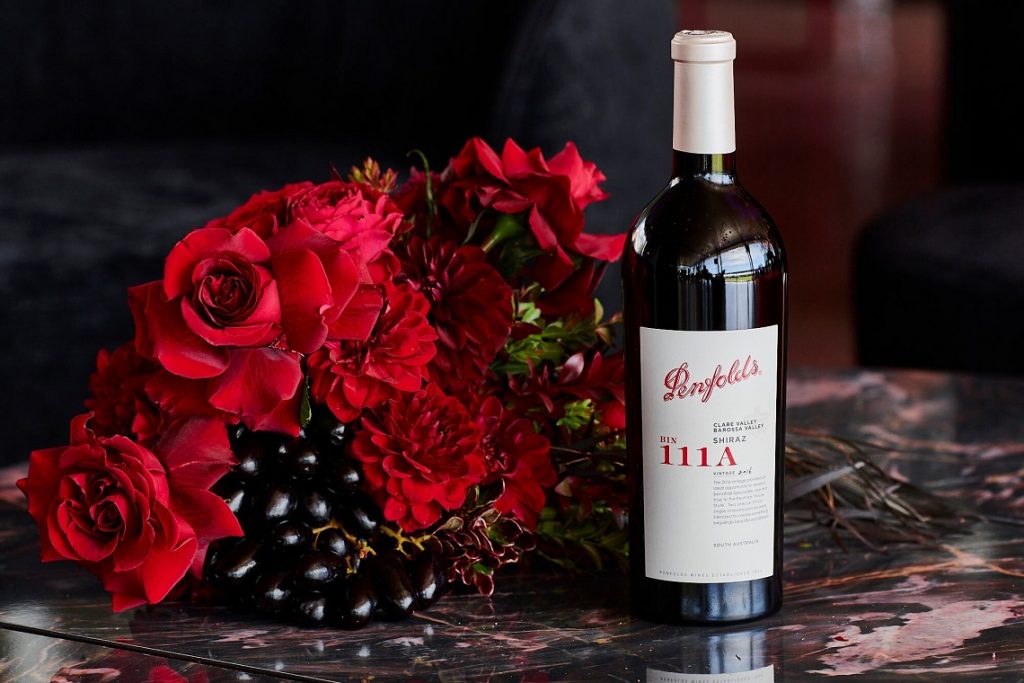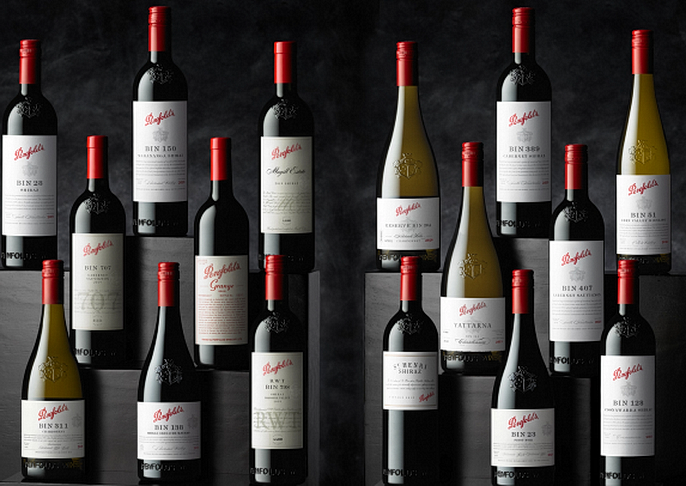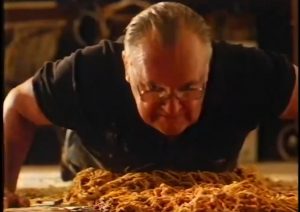‘If this year’s average auction price for the past 20 vintages is anything to go by, Grange should sell for $523. Will you pay $900?’ Tyson Stelzer.
You’ve gotta give it to Penfolds
They know how to milk their loyal customers. And they know how to milk Max Schubert’s towering legacy for every last dollar. They have no shame. They put the great man’s name on all kinds of garish labels. Max never made a Rosé, but they made one for him. They have no shame.
The latest stunt is the Penfolds g5, a five-vintage blend of Granges stretching back to 2010 that sells for $3500 a 750 ml bottle. Is that it? YUP, that’s it. They pour bottles from 5 vintages into a vat, stir the blend and bottle it under a fancy new label. Then they sell it at 4 times the price of the current vintage Grange. Or 6 times the average auction price of the 2008 Grange, which scored 100 perfect points with Robert Parker’s Wine Advocate.
Is the blend of 5 recent vintages worth so much more than older vintages of Grange? And I’m talking about pitch-perfect Granges here such as the 1976, 1986, 1990, 1991 or 1996? Do you know that you can buy these FIVE vintages at auction for a total of $3500?That’s right: FIVE bottles of the best Granges made in the last 50 years for the same money as a single bottle of g5, or the same money as FOUR bottles of the current Grange 2017.
You’ll never get your money back
It’s a myth that Grange will appreciate with age. You can buy every Grange made since the stunning 1976 for less than the current release. How come? Penfolds got too greedy at the turn of the millennium when it pushed the price of Grange to $500 and beyond. That’s about the average price of Grange on the auction scene today, the ‘secondary market.’
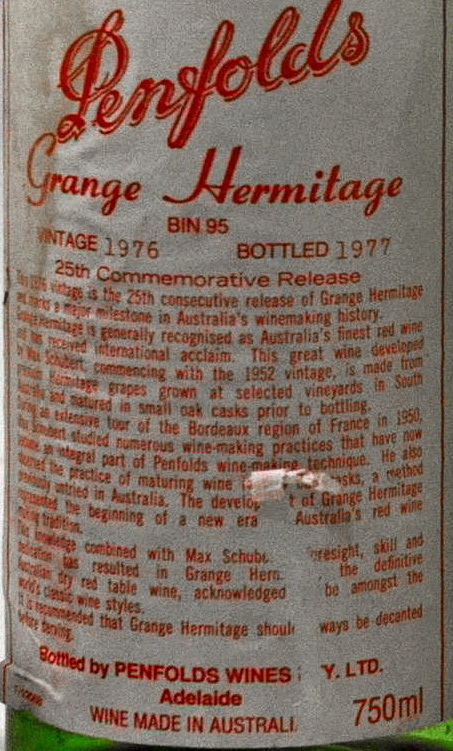 The result is that you’ll lose money when selling bottles of Grange you’ve bought in the last 20 years. And you’ll be lucky to get your money back if you paid more than $500 a bottle. So why is Penfolds selling Grange for more than it will fetch at auction decades later? Because they’re greedy, and the faithful keep buying the wine.
The result is that you’ll lose money when selling bottles of Grange you’ve bought in the last 20 years. And you’ll be lucky to get your money back if you paid more than $500 a bottle. So why is Penfolds selling Grange for more than it will fetch at auction decades later? Because they’re greedy, and the faithful keep buying the wine.
Peter Gago claims that Penfolds’ high prices reflect the strong demand for Grange. That’s obvious nonsense given that the auction market is awash with top notch Granges at prices close to half those of the current releases. Check the latest auction prices here.
The 2011 vintage in South Australia was a washout. When this happens in Bordeaux, they don’t make the Grand Vin in that vintage, yet Penfolds sold their 2011 Grange for $785 in 2015, while the great 2008 and 2010 Granges sold for $600 at auction.
‘What’s the true value of Penfolds Grange?’ asks Tyson Stelzer in a post headed Grange, the Big Dilemma. He goes on to say: ‘If this year’s average auction price for the past 20 vintages is anything to go by, the answer is $523. Will you pay $900?’
Hunters & Collectors
The people at Penfolds know their market. Many of the punters lining up to buy the g5, or new releases of Grange, are not wine lovers or connoisseurs. They’re collectors. Grange is more often collected and traded than enjoyed, but most buyers say they’re happy to drink the wines rather than lose money selling them. Think of the g5 as a famous stamp or a special minting of Bitcoin. The stamp below is worth a million dollars.
Inverted Jenny 1918 Stamp (photo via Wikimedia Commons
Unlike wine, stamps become more valuable when a mistake was made in their production. As with fine wine, rarity plays a crucial role. Among Penfolds’ top end reds, the most valuable Granges are the early ones (1951 – 1953), which were produced in tiny numbers, and are now rare as hen’s teeth.
A very rare Grange Hermitage Bin 1 Shiraz 1951, the first ever vintage made, recently sold for $142,131 and became the most expensive bottle of Australian wine ever. Other Granges that fetch high prices are those Max Schubert made in the late fifties after he was ordered to stop making this wine. Again, the small quantities made, and the story behind them, have been good investments despite the fact that Max couldn’t buy the new oak barrels that are so vital to the make-up of this wine.
Unbroken sets of Grange also fetch high prices if they contain a few rare vintages.
Special Bottlings
Max made a couple of these in the sixties: the Bin 60A Coonawarra Cabernet Barossa Shiraz 1962, and the Bin 620 Cabernet Sauvignon Shiraz 1966 (also from Coonawarra). The Bin 60A is among the top wines ever made down under, the experts tell us, and fetched some $20,000 at a recent Barossa auction. The Bin 620 isn’t far behind.
A couple of mates of mine who own a number of old Penfolds reds went to a re-corking clinic in Sydney, where a Penfolds staffer pronounced the Bin 620 dead on arrival. My mates argued that the lady was wrong, so she got a second opinion from a colleague who confirmed her verdict.
My mates took the wine home with them, and just for fun opened it the following evening with dinner where it astonished them with its sheer delights. Needless to add: they don’t have a high opinion of Penfolds recorking clinics.
When Peter Gago took over as chief winemaker, he released new wines under the same 2 bin numbers in 2004 and 2008. There was a new special bottling as well: Block 42 Kalimna Cabernet Sauvignon 2004 (the wine that went into the 168,000 dollar ampoule). The follow-up was the Bin 170 Kalimna Vineyard Block 3C 2010.
The faithful snapped these wines up despite prices double those of the mighty Grange, which can’t have been thrilled about being upstaged by newcomers with no lineage.
Super Blends
In 2017 Penfolds released the g3, a blend of 3 vintages. Had Penfolds’ marketing minions run out of ideas for special blends? ‘Blending across vintages is part of Penfolds winemaking philosophy,’ Peter Gago told the media and referred to Penfolds’ Tawny ports, ‘famous in the mid-1800’s (you’d think they could afford a competent copywriter, wouldn’t you?) made by blending multiple vintages. ‘A natural progression was to apply this venerated technique to create a new Penfolds red style,’ said Gago.
This claim is fanciful at best, and cynical at worst as Gago well knows: most ports are blended from multiple vintages, and so are most champagnes. However, in both cases the single vintage wines fetch much higher prices than the blends because they’re only made in great vintages in limited quantities.
I don’t know of any reds in the world with 4 digit price tags that are blends of several vintages (although someone is bound to correct me). Such blends are typically found on supermarket shelves at single digit prices. That said, the faithful snapped the g3 up, and the g4 followed in 2020. An obvious move by Penfolds since it’s all money for jam. And now the g5.
Where do you get it? You can’t just walk into your local Dan Murphy’s and buy a 6-pack. No, you have to go through an expression of interest process with Penfolds, where you might score a bottle or 2 if you’re fast enough. No kidding.
Profusion & Confusion
In between the g3 and g4, Penfolds released the Bin 111A Clare Valley Barossa Valley Shiraz 2016, which scored a perfect 100 points with several reviewers. You can actually still buy this wine today, for $1500 a bottle. I suspect the faithful either couldn’t keep up with all the new releases or they were terminally confused.
You’d think Penfolds would’ve kept a wine of this caliber for the 70th birthday of Grange (2021), but you’d be wrong. Instead Gago launched ‘Superblend’ 802-A Cabernet Sauvignon Shiraz 2018 on an unsuspecting world in 2021, for the same price as the current Grange. This was a double release as there was a twin called Superblend 802-B. One is matured in American oak, the other in French.
These superblends didn’t impress Huon Hooke or Ken Gargett, who came up with scores of 93 points. Others score the wines between 95 and 97 points. Either way, these releases diminish the stature of Grange, and that of Penfolds, unless they are are really special.
The Penfolds Collection
Once the collection numbered half a dozen wines: Grange, St Henri, bins 707, 389, 28 and 128. The 2021 Penfolds Collection. contains over 30 wines. Penfolds has become a fashion house, turning out new styles for every season, except that they’re not new styles but new takes on an existing themes.
The style has changed dramatically from the days when Max Schubert made elegant reds of sublime caliber, complexity and staying power, often with 13% alcohol or less.
The custodians of Grange and its offspring have lost the master’s magic touch, and replaced it with more of everything – super-ripe fruit, massive oak, lots of polish and huge alcohol levels. It seems their leitmotif these days is ‘More is Better’. That goes for other labels as well: Penfolds now makes in excess of 150 wines.
Their website resembles a vast department store where finding what you’re looking for demands steely determination and endless patience. The Collection is just the beginning. There are subgroups of wines: Classics, Esteemed Reds, Favourites, vertical sets of wines, gift box sets and more.
Then there’s a section called MAX’s that serves up a mishmash of 7 reds that would embarrass Max, were he still alive. Then there’s the Cellar Reserve with another 9 wines, and 5 more wines appear in the Tribute Range. More embarrassments. Then there are the ordinary wines Penfolds makes, the wines they would rather not talk about: Koonunga Hill et al. Rawson’s Retreat labels no longer mention Penfolds’ name.
It all reminds me of that Stainmaster carpet ad, where the cleaning lady exclaims: Oh, Mr Hart – what a mess!
FOOTNOTE
I sold my last dozen of Grange (1972) many years ago for a decent profit, and I haven’t bought any since. I did buy some St Henri 2010 in 2014 for around $80 a bottle. The critics scored the wine between 98 and 100 points, higher than the then current Grange (2009?). Today the 2010 St Henri sells for about $300 at auction, close to 4 times what I paid 8 years ago. Here’s my take on the 2010 St Henri back in 2010.
The 2018 is another sublime St Henri from a great vintage that scores 97 to 100 points with the critics. It will appreciate in value for sure, and you can buy it for $115 a bottle or $690 for a 6-pack. At that price, you can enjoy it on special occasions over the next 3 decades.
Additional Reading
Penfolds Bin 60A 1962: Australia’s Greatest Wine Ever, via Quill & Pad
Grange, the Big Dilemma, by Tyson Stelzer

